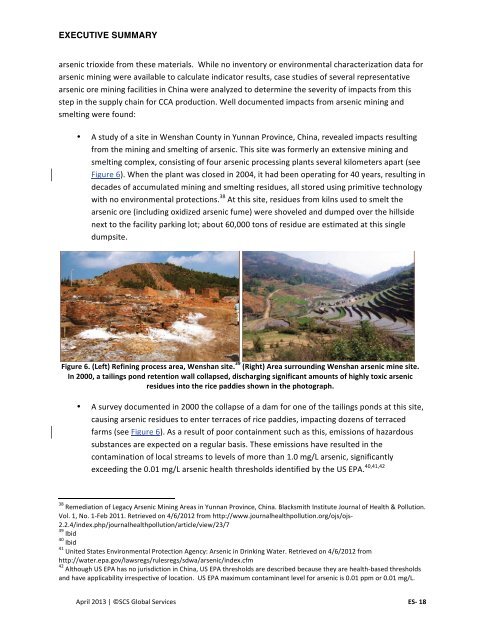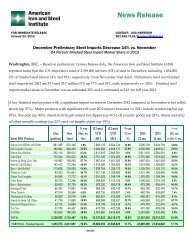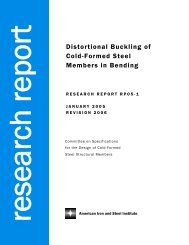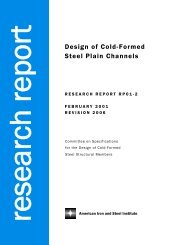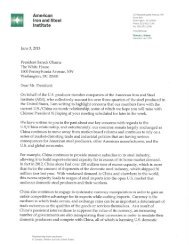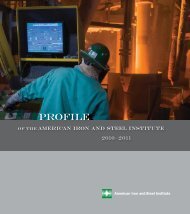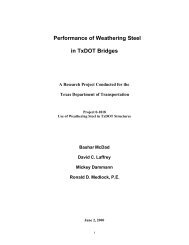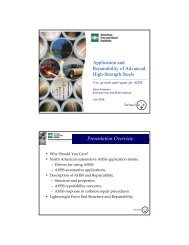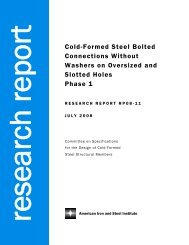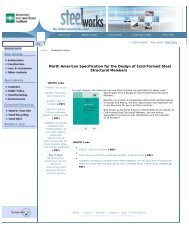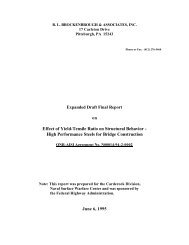Environmental Life Cycle Assessment of Southern Yellow Pine ...
Environmental Life Cycle Assessment of Southern Yellow Pine ...
Environmental Life Cycle Assessment of Southern Yellow Pine ...
You also want an ePaper? Increase the reach of your titles
YUMPU automatically turns print PDFs into web optimized ePapers that Google loves.
EXECUTIVE SUMMARY<br />
arsenic trioxide from these materials. While no inventory or environmental characterization data for <br />
arsenic mining were available to calculate indicator results, case studies <strong>of</strong> several representative <br />
arsenic ore mining facilities in China were analyzed to determine the severity <strong>of</strong> impacts from this <br />
step in the supply chain for CCA production. Well documented impacts from arsenic mining and <br />
smelting were found: <br />
• A study <strong>of</strong> a site in Wenshan County in Yunnan Province, China, revealed impacts resulting <br />
from the mining and smelting <strong>of</strong> arsenic. This site was formerly an extensive mining and <br />
smelting complex, consisting <strong>of</strong> four arsenic processing plants several kilometers apart (see <br />
Figure 6). When the plant was closed in 2004, it had been operating for 40 years, resulting in <br />
decades <strong>of</strong> accumulated mining and smelting residues, all stored using primitive technology <br />
with no environmental protections. 38 At this site, residues from kilns used to smelt the <br />
arsenic ore (including oxidized arsenic fume) were shoveled and dumped over the hillside <br />
next to the facility parking lot; about 60,000 tons <strong>of</strong> residue are estimated at this single <br />
dumpsite. <br />
Figure 6. (Left) Refining process area, Wenshan site. 39 (Right) Area surrounding Wenshan arsenic mine site. <br />
In 2000, a tailings pond retention wall collapsed, discharging significant amounts <strong>of</strong> highly toxic arsenic <br />
residues into the rice paddies shown in the photograph. <br />
• A survey documented in 2000 the collapse <strong>of</strong> a dam for one <strong>of</strong> the tailings ponds at this site, <br />
causing arsenic residues to enter terraces <strong>of</strong> rice paddies, impacting dozens <strong>of</strong> terraced <br />
farms (see Figure 6). As a result <strong>of</strong> poor containment such as this, emissions <strong>of</strong> hazardous <br />
substances are expected on a regular basis. These emissions have resulted in the <br />
contamination <strong>of</strong> local streams to levels <strong>of</strong> more than 1.0 mg/L arsenic, significantly <br />
exceeding the 0.01 mg/L arsenic health thresholds identified by the US EPA. 40,41,42<br />
38 Remediation <strong>of</strong> Legacy Arsenic Mining Areas in Yunnan Province, China. Blacksmith Institute Journal <strong>of</strong> Health & Pollution. <br />
Vol. 1, No. 1-‐Feb 2011. Retrieved on 4/6/2012 from http://www.journalhealthpollution.org/ojs/ojs-‐<br />
2.2.4/index.php/journalhealthpollution/article/view/23/7 <br />
39 Ibid <br />
40 Ibid <br />
41 United States <strong>Environmental</strong> Protection Agency: Arsenic in Drinking Water. Retrieved on 4/6/2012 from <br />
http://water.epa.gov/lawsregs/rulesregs/sdwa/arsenic/index.cfm <br />
42 Although US EPA has no jurisdiction in China, US EPA thresholds are described because they are health-‐based thresholds <br />
and have applicability irrespective <strong>of</strong> location. US EPA maximum contaminant level for arsenic is 0.01 ppm or 0.01 mg/L. <br />
April 2013 | ©SCS Global Services <br />
ES-‐ 18


